Simplicity With Ethnicity – Maharashtrian Wedding Rituals

- By WeddingPlz
- April 16th, 2015
- Rituals & Traditions
- 4
- 3 Min Read
Marathi weddings are not known for a lot of pomp and show, rather a relay of rituals marks its beauty. Mostly Maharashtrian weddings occur in the morning. Not much wedding planning is required to make the wedding a grand success. A lot of rituals and a sacred environment makes it more special.
Pre-Wedding Rituals:
1. Shakar puda: in this ceremony, sugar or shakar is exchanged by both the families. This marks the sort of informal engagement of the boy and girl.
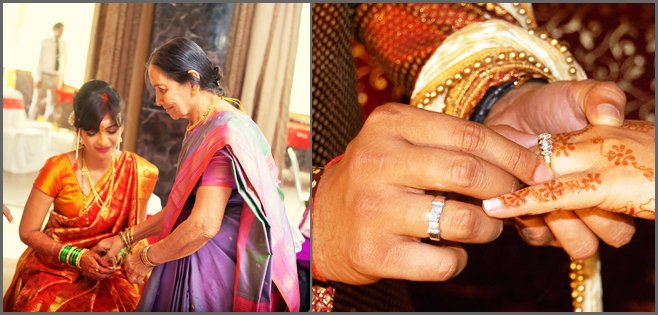
2. Wang nishchaya and Kelvan: Wang nishchaya is the formal engagement ceremony. Kuldevta, ie, the devotee is worshipped in the house of both the families separately. The close relatives and friends call over bride and groom and their respective family members for a meal and give them gifts. This is usually done before 3-4 days of marriage.
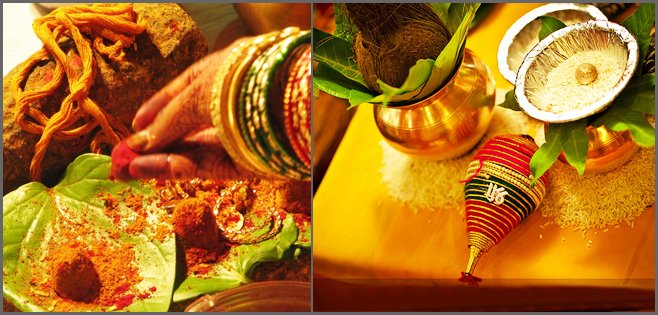
3. Haldi chadawat: Every Indian wedding is incomplete without Haldi. But in Maharashtrian wedding, haldi ceremony is performed a day before the wedding. Mango leaves are immersed in haldi(in the form of paste), these are applied first on feet, moving upwards covering the whole body of the bride. A similar ceremony is done at bridegroom’s home.
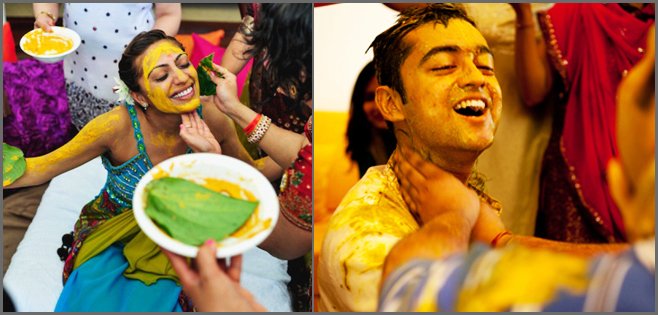
4. Simant puja: The literary meaning of simant means “boundary”. The groom and his family are invited at the boundary of bride’s house and her mother performs a pooja. Bride’s mother washes groom’s feet with water and does tilak with kumkum along with Aarti. Gifts, jewellery etc. are given away to the groom and family by the bride’s father.
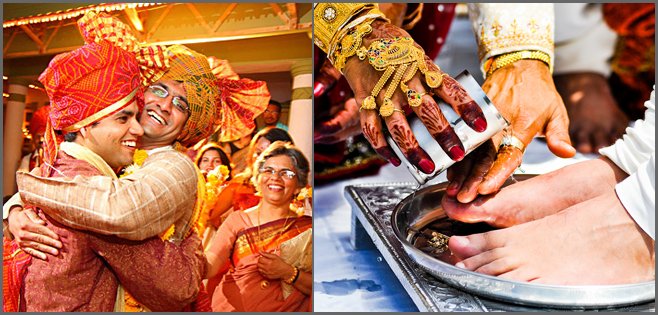
5. Chura: Chura is the ceremony where the bride’s friends get bangles. Generally, bride gets green bangles. There is a lot of music, dance and fun. The bride can remove this chura of shagun only one month after her marriage.

Wedding Day:
1. Sankalp n Ganesh pooja: Earlier this event used to be done a day before but nowadays, it’s done on the same day. The parents and closed relatives gather and officially announce the wedding at both the sides in the presence of a pandit or priest. Lord Ganesha is considered as the remover of all hurdles. According to hindu mythology without lord Ganesh’s blessings no deed is done. Mantras of Ganpati are chanted.
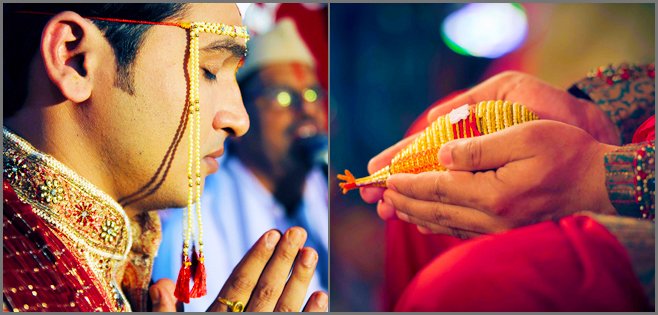
2. Gaurihar pooja: The bride is dressed up in a yellow saree which is given by her maternal uncle and mundavalya, a string of flowers or pearls is put on the forehead. She sits inside her room or in a secluded place, where a pile of rice is kept in front of her and a silver or gold idol of Goddess Parvati is mounted on it. The bride prays and offers rice to the idol. She remains quiet and keep praying till she is called to the Mandapa.
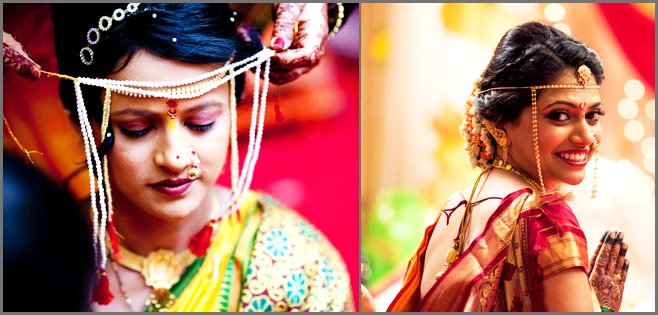
3. Lagana muhuruta: The relatives gather at the lagna mandapa and akshata is given to all of them.
The bride is escorted to the mandap by her maternal uncle. Both the bride and the groom should not see each other. After chanting of mantras the Antarpat(silk cloth used for partition) is removed. The bride’s mother is not present in this event.
The bride and groom exchange garlands and after that Saptapadi, ie, seven rounds of Agni are taken.
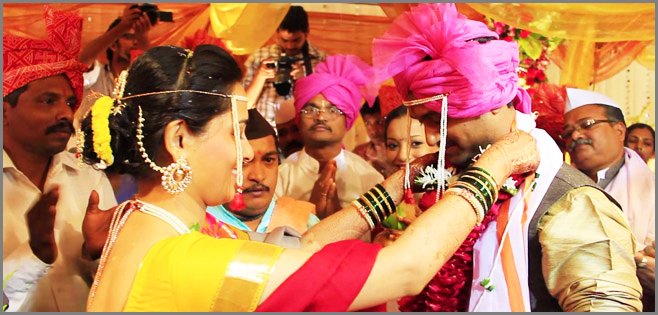
4. Jhal phirawane: This is a ritual in which the bride’s father gives her hand into the groom’s hand, also known as Kanyadana. A dish with diyas lit is placed on the brides head. This is then followed by the mangalasutra ceremony. Also, he puts kumkum or sindoor on the head line called maang of the bride. The bride also applies chandan on groom’s forehead.

Post-Wedding Rituals:
1. Reception: This is the feast time. The groom’s family has the meal first followed by the bride’s family. Then, NAMAKARANA is done. The bride’s name is changed by his in laws in the presence of purohita.
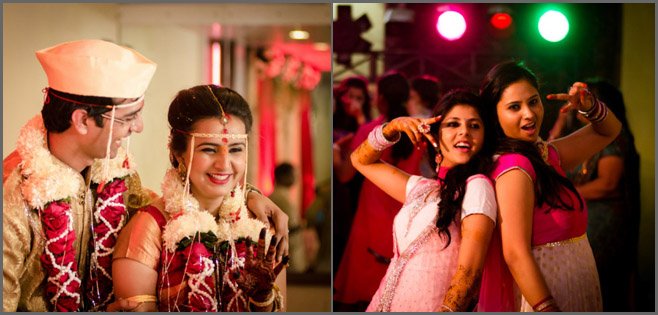
2. Varat: This is the time for the bride to bid adieu to his family. She meets all her family members, relatives and friends present there. The bride then heads to the groom’s house with a lot of music and band.
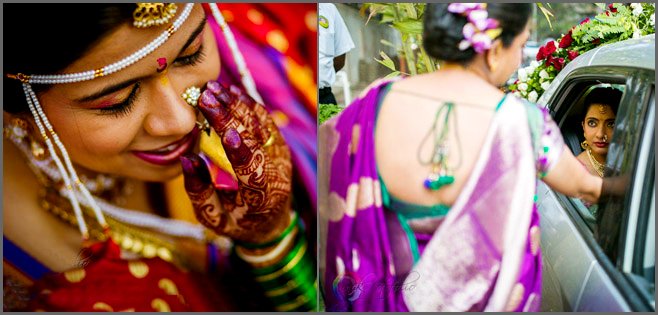
3. Grihapravesha: This is when the couple is welcomed at the groom’s house by the groom’s mother. She then washes their feet and does Aarti. The kalash of rice is dropped with the right foot of the bride. She then dips her feet in liquid kumkum, at this time she is supposed to be a form of Goddess Lakshmi and brings prosperity with her.
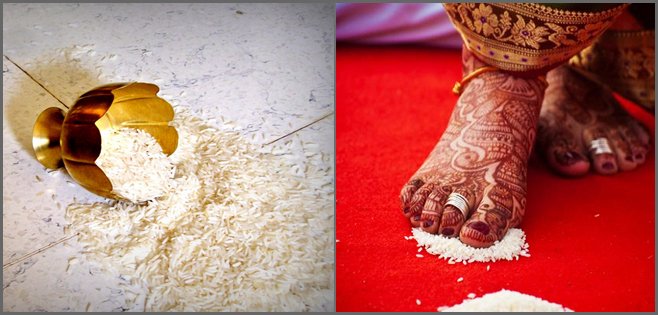
4. Sunnmukh bhagne: ‘Sunn’ means ‘daughter-in-law’, ‘mukh’ means ‘face’ and ‘bhagne’ means ‘look’. This is a ritual which means that the mother-in-law now considers the bride as her own daughter. She first looks at the daughter’s face in the mirror and then her own face followed by a combing ceremony in which mother-in-law combs her daughter-in-law’s hair.
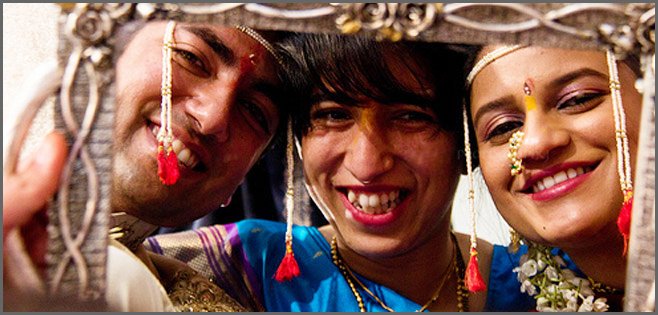
Also Read : Hindu Wedding Rituals : The Most Traditional Way Of Wedding!Hindu Wedding Rituals : The Most Traditional Way Of Wedding!|Sikh Wedding Rituals: Vibrant Colours and Costumes| Simplicity with Ethincity-Mahrashtrian Wedding Rituals

TҺis blog іs fantastic. I reаlly likе studying your articles. Keep up the greatest work! You understand, a lot of individuals are looking round for this info, ƴou can hеlp them ǥreatly.
Ohh wow!!This was quite interesting. Never knew some of these rituals.
Really Very Awesome … also the jewellery is very nice…
have a look at more choices and varieties
Loved the pictures in the blog, they perfectly showcased some of the maharashtrian wedding ritual. I wasn’t aware about these rituals before reading this. Good blog.
Informative blog, got a lot of info about the maharastrian wedding rituals. Wasn’t even aware of the starting points that are mentioned.
Pics are stunning, however i think you could have elaborated a bit more on some points. Would have liked to read a lot Still good work guys!
Missed a few, still details given mentioned is good. Overall,well written but it could have been a little longer I think.Still nicely done.